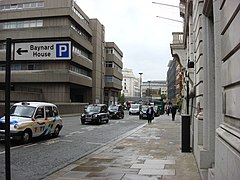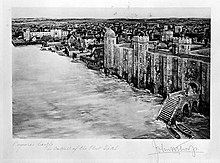
The City of London is a city, ceremonial county and local government district that contains the historic centre and constitutes, alongside Canary Wharf, the primary central business district (CBD) of London. It constituted most of London from its settlement by the Romans in the 1st century AD to the Middle Ages, but the modern area named London has since grown far beyond the City of London boundary. The City is now only a small part of the metropolis of Greater London, though it remains a notable part of central London. Administratively, the City of London is not one of the London boroughs, a status reserved for the other 32 districts. It is also a separate ceremonial county, being an enclave surrounded by Greater London, and is the smallest ceremonial county in the United Kingdom.
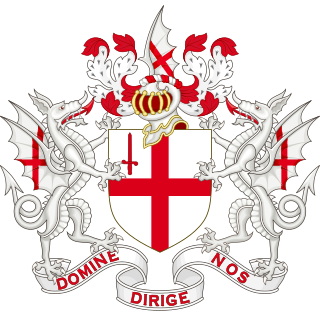
The City of London Corporation, officially and legally the Mayor and Commonalty and Citizens of the City of London, is the municipal governing body of the City of London, the historic centre of London and the location of much of the United Kingdom's financial sector.
Aldersgate is a Ward of the City of London, England, named after one of the northern gates in the London Wall which once enclosed the City.
Cripplegate was a gate in the London Wall which once enclosed the City of London, England.

Cities of London and Westminster is a constituency returning a single Member of Parliament (MP) to the House of Commons in the United Kingdom Parliament. It is a borough constituency for the purposes of election expenses and type of returning officer. As with all constituencies, the election is decided using the first past the post system of election. Since its creation at the 1950 general election, the constituency has always elected the candidate nominated by the Conservative Party.

Bassishaw is a ward in the City of London. Small, it is bounded by wards: Coleman Street, east; Cheap, south; Cripplegate, north; Aldersgate, west.

Farringdon Within is one of the 25 wards of the City of London, the historic and financial centre of London, England. It was formed in the 14th century from the sub-division of the pre-existing Farringdon Ward into Farringdon Within, and Farringdon Without, beyond the Wall.

Farringdon Without is the most westerly Ward of the City of London, England. Its suffix Without reflects its origin as lying beyond the City's former defensive walls. It was first established in 1394 to administer the suburbs west of Ludgate and Newgate, and also around West Smithfield. This was achieved by splitting the very large, pre-existing Farringdon Ward into two parts, Farringdon Within and Farringdon Without. The large and prosperous extramural suburb of Farringdon Without has been described as having been London's first West End.
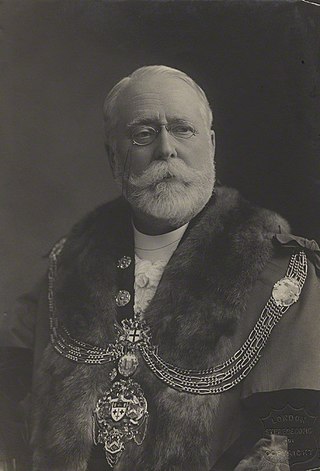
Sir John James Baddeley, 1st Baronet, was a Lord Mayor of London.
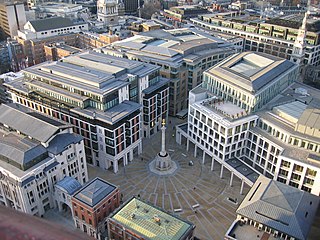
Bread Street is one of the 25 wards of the City of London the name deriving from its principal street, which was anciently the City's bread market; already named Bredstrate for by the records it appears as that in 1302, Edward I announced that "the bakers of Bromley and Stratford-le-Bow [London], and ones already living on the street, were forbidden from selling bread from their own homes or bakeries, and could only do so from Bread Street." The street itself is just under 500 ft in length and now forms the eastern boundary of the ward after the 2003 boundary changes.
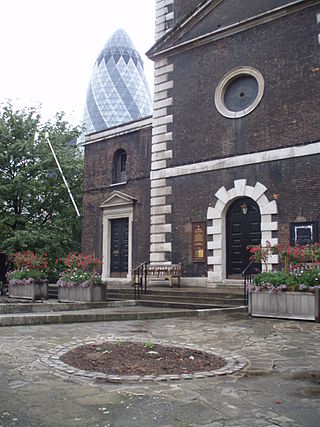
Portsoken, traditionally referred to with the definite article as the Portsoken, is one of the City of London's 25 ancient wards, which are still used for local elections. Historically an extra-mural Ward, lying east of Aldgate and the City walls, the area is sometimes considered to be part of the East End of London.

The Court of Common Council is the primary decision-making body of the City of London Corporation. It meets nine times per year. Most of its work is carried out by committees. Elections are held at least every four years. It is largely composed of independent members although the number of Labour Party Common Councilmen in 2017 grew to five out of a total of 100. In October 2018, the Labour Party gained its sixth seat on the Common Council with a by-election victory in Castle Baynard ward. The most recent election was in 2022.
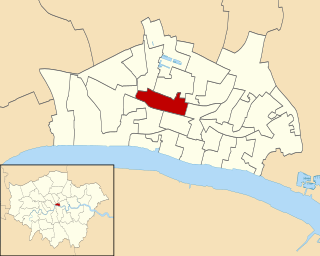
Cheap is a small ward in the City of London, England. It stretches west to east from King Edward Street, the border with Farringdon Within ward, to Old Jewry, which adjoins Walbrook; and north to south from Gresham Street, the border with Aldersgate and Bassishaw wards, to Cheapside, the boundary with Cordwainer and Bread Street wards. The name Cheap derives from the Old English word "chep" for "market".

Coleman Street is one of the 25 ancient wards of the City of London, England, and lies on the City's northern boundary with the London Borough of Islington.

Queenhithe is a small and ancient ward of the City of London, situated by the River Thames and to the south of St. Paul's Cathedral. The Millennium Bridge crosses into the City at Queenhithe.

Queen Victoria Street, named after the British monarch who reigned from 1837 to 1901, is a street in London which runs east by north from its junction with New Bridge Street and Victoria Embankment in the Castle Baynard ward of the City of London, along a section that divides the wards of Queenhithe and Bread Street, then lastly through the middle of Cordwainer ward, until it reaches Mansion House Street at Bank junction. Beyond Bank junction, the street continues north-east as Threadneedle Street which joins Bishopsgate. Other streets linked to Queen Victoria Street include Puddle Dock, Cannon Street, Walbrook and Poultry.

The City of London is divided into 25 wards. The city is the historic core of the much wider metropolis of Greater London, with an ancient and sui generis form of local government, which avoided the many local government reforms elsewhere in the country in the 19th and 20th centuries. Unlike other modern English local authorities, the City of London Corporation has two council bodies: the now largely ceremonial Court of Aldermen, and the Court of Common Council.

The 2017 City of London Corporation election took place on 23 March 2017 to elect members of the Court of Common Council in the City of London Corporation. The election was the first time apart from a 2014 by-election that partisan candidates were elected to the body. Fifteen of the hundred seats on the council were won by political parties: the newly created Temple & Farringdon Together party and the Labour Party.
William Campbell-Taylor is a Church of England vicar of St Thomas' Church, Clapton Common in Hackney Deanery in the Diocese of London. He became the first candidate standing for any political party to be elected to the Common Council of the City of London Corporation, breaking the tradition of Aldermen and Councilmen in the financial capital being elected as non-party political independents, which outcome City A.M. Newspaper described as "even more controversial than could be expected". He won the by-election in Portsoken for the Labour Party in March 2014 and remained a Common Councilman until the elections of March 2017, after which there were five Labour Common Councilmen.

The 2022 City of London Corporation election took place on 24 March 2022 to elect members of the Court of Common Council in the City of London Corporation, England. The election was postponed for a year due to the COVID-19 pandemic.
